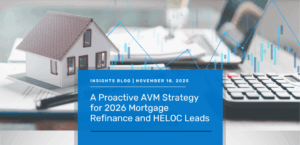The debate heats up as the appraiser shortage continues to lengthen the appraisal process, creating problems for homebuyers who can’t afford to buy their homes all in cash.
According to a recent article published by the Urban Institute, the slow appraisal system is giving cash buyers the upper hand. Not just in hot markets, but nationwide a combination of the appraiser shortage and inefficient appraisals are “killing deals and giving a big advantage to cash buyers over borrowers,” the Urban Institute wrote.

Furthermore, a July 6 Chicago Tribune article claims appraisals are derailing sales, “and real estate agents say the home valuation process has become a high hurdle for buyers who need loans.” For a variety of reasons, appraisals are often valuing properties below-market rates in hot areas of Chicago’s real estate market. Most lenders require appraisals and for buyers counting on bank loans, the low appraisals can kill a deal since lenders refuse to lend amounts above appraised value. With bidding wars on moderately priced homes in the Chicago area, appraisers aren’t keeping up with the rising prices, and the undervaluation is causing bank deals to fall through.
Keeping Up With Big Data
As the number of licensed appraisers plunge per the Urban Institute, the future of the appraiser profession has become a bigger topic as the country’s two biggest sources of mortgage financing —Fannie Mae® and Freddie Mac® — are starting to get more comfortable with no-appraisal refinancing transactions and leveraging technology to arrive at property valuations. Fannie says it’s database has over 23 million appraisal reports and uses “proprietary analytics” to derive a value estimate. They’ve essentially revolutionized the industry by creating a vast database of appraisal information for analysis while standardizing data collection, so everyone notes the home’s features and conditions the same way.
Both Fannie Mae and Freddie Mac will be allowing some loans to go through without an appraisal performed by a human being. The GSEs are focused on reducing appraisal turnaround times and reducing costs for lenders. As part of their effort to be more agile and customer focused, Fannie is allowing Property Inspection Waivers on mortgages with low loan-to-value ratios.
Recently, Freddie Mac launched a new product—ACE, their new Automated Collateral Evaluation designed to cut the appraisal process out of qualified home purchases and refinances. According to Freddie, “ACE uses big data and advanced analytics to create a faster, less costly origination process.” A move that could substantially save borrowers and lenders money and reduce closing times. David Lowman, Freddie Mac executive vice president of single-family business said, “this is just one example of how we are reimagining the mortgage process to create a better experience for consumers and lenders.”
With technologies like this reducing the demand for appraisals, and as data advances and algorithms become more sophisticated, will automation eliminate appraiser jobs in the future?
That’s the conclusion of a recent article on Bloomberg, which discusses progressive advances in big data and instantaneous computing helping to automate the knowledge-base job. It’s inarguable that machines can process information and enhance algorithms faster and even better than humans. Automated valuation model (AVM) algorithms are constantly learning, refining, and ingesting all kinds of untapped data to continually make valuation models work better – becoming more accurate.
Detractors say that property databases have to be regularly refreshed to include updated information on the interior condition of homes – including observations on the presence of value-depressing environmental features in the neighborhood that aren’t likely to be picked by computers. And, to deliver the most accurate estimates, models need the latest hyperlocal information on amenities, demographics, and economics; they need similar, recently sold homes for comparison.
It’s important to recognize that any number of AVMs have obtained permissible-purpose access to MLS databases, giving them the rights to current photos of the subject property, agent comments, and comparable data. In reality, the industry’s top AVMs are ingesting detailed property data and assessments being provided and uploaded by agents and brokers nearly every day. AVM models are dynamically learning from the changing markets – aggressively collecting and rigorously scrubbing through rich data to stay up to date. Some AVMs can even provide current photos of the property as part of the valuation estimate. Top tier AVMs combine complex machine learning, public records, MLS data, photos, information from brokers and users, as well as expertise from data scientists and researchers to engineer algorithms to produce increasingly accurate, real-time market value estimate—providing greater speed and efficiency while maintaining responsible levels of risk management.
Consumers today have a fascination with machine-learning driven AVM technology; and, today’s top commercial AVMs in the lender marketplace are a great deal more accurate than the free sites because they have more sophisticated modeling, multiple data sources, and are better tested. Tests show these AVMs have significantly lower mean and median absolute errors than the values shown on free sites. Top AVMs, like VeroVALUE, are rigorously tested by third-party entities, have dramatically lower errors, lower risk, and higher accuracy rates than the ones available for the general consumers.
When to use an AVM?
Perhaps, the question we should focus more on is deciding when is the best time to use an AVM.
With the growing number of homeowners looking to renovate their existing homes, some smart lenders are using AVMs for certain types of loans, like Home Equity Line of Credits (HELOCs). The rise in HELOCs creates a great opportunity for lenders to continue to serve their borrower. Lenders and servicers today commonly use AVMs in the following ways: property prequalification, home equity lending, and portfolio analysis.
For home equity lending, lenders often use AVMs to prequalify the property for the loan or line of credit and utilize it to determine whether to increase, decrease or end the line of credit based on the borrower’s home equity. And, AVM is the tool used to determine the final lending value of the property. Some lenders opt to utilize AVMs in conjunction with a property condition/inspection report to confirm condition of the property. Today, lenders use valuation management technology like VeroSELECT to simultaneously order AVMs with property condition reports—all within one system.
It’s Not Complicated
Critics claim that automated technology can perform well with homogenous properties, but big data can’t always detect nuances. They point to complicated or unique properties where there’s no replacement for an appraisal by a live appraiser, like in remote areas, in neighborhoods with a lot of variations and aging properties. Clearly, many systems will need some level of human expertise on some properties, the type of analysis that highly-skilled appraisers are trained to provide.
However, in today’s reality, AVMs and appraisers have access to the same datasets, closing the data gap that was once a concern. Detailed agent data and property condition information are readily available for AVM algorithms to take the photos and expand on them by adding in agent or broker commentaries.
Astute AVM users and prospective users should perform independent validation of AVM results for consistency and determine what level of rigor is required given the company’s use of AVMs. The AVM results should be consistent with safe and sound banking practices and policies of the organization. Lenders should put their AVMs to the challenge by evaluating the results received are consistent with the benchmark assessment.
And so, the question remains – will technology fully replace appraisers? Appraisers disagree. According to the NAR’s Economics Outlook, “the future of appraisal: it’s not simple,” – and we agree.
Download the U.S. VALUATION PROFESSION FACT SHEET – December, 2016
Download the Appraiser Trend Survey 2017




